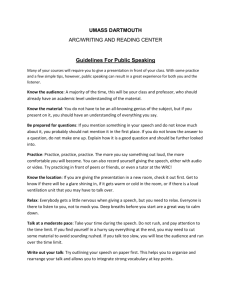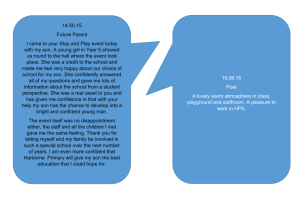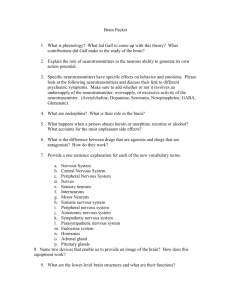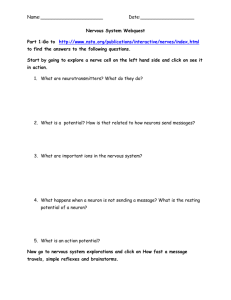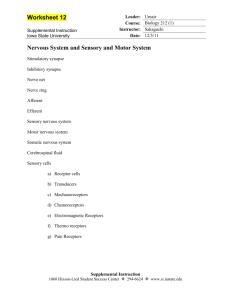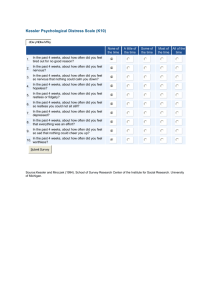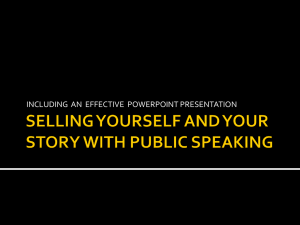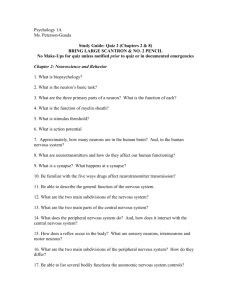Handout: Tips for Making an Effective Speech or Presentation
advertisement
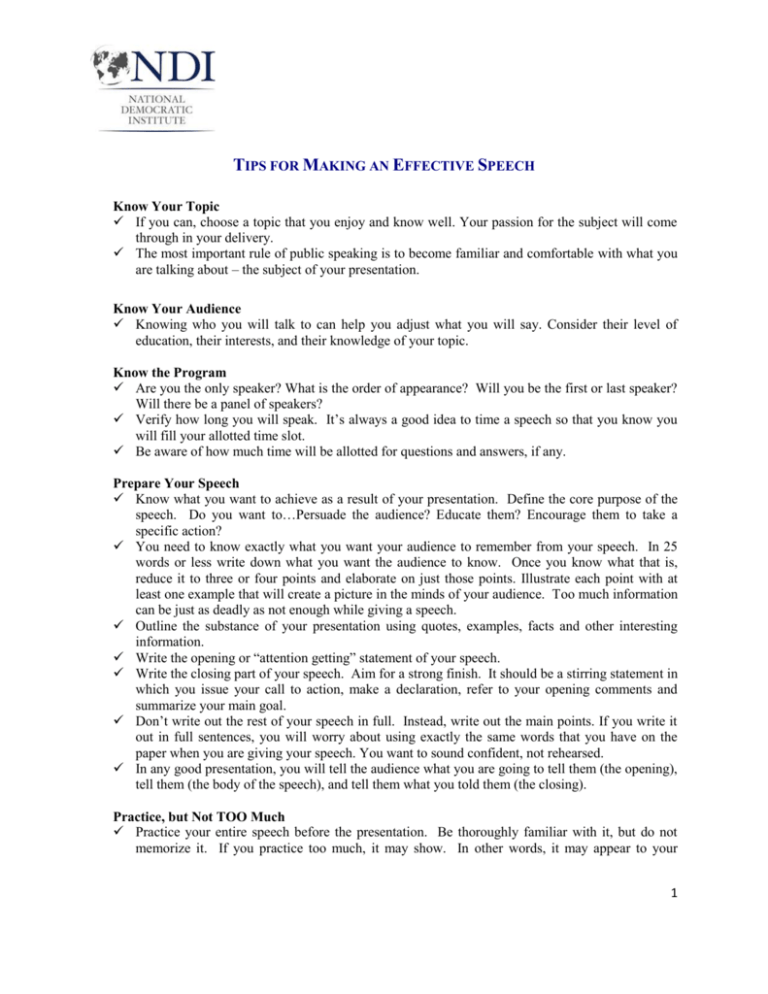
TIPS FOR MAKING AN EFFECTIVE SPEECH Know Your Topic If you can, choose a topic that you enjoy and know well. Your passion for the subject will come through in your delivery. The most important rule of public speaking is to become familiar and comfortable with what you are talking about – the subject of your presentation. Know Your Audience Knowing who you will talk to can help you adjust what you will say. Consider their level of education, their interests, and their knowledge of your topic. Know the Program Are you the only speaker? What is the order of appearance? Will you be the first or last speaker? Will there be a panel of speakers? Verify how long you will speak. It’s always a good idea to time a speech so that you know you will fill your allotted time slot. Be aware of how much time will be allotted for questions and answers, if any. Prepare Your Speech Know what you want to achieve as a result of your presentation. Define the core purpose of the speech. Do you want to…Persuade the audience? Educate them? Encourage them to take a specific action? You need to know exactly what you want your audience to remember from your speech. In 25 words or less write down what you want the audience to know. Once you know what that is, reduce it to three or four points and elaborate on just those points. Illustrate each point with at least one example that will create a picture in the minds of your audience. Too much information can be just as deadly as not enough while giving a speech. Outline the substance of your presentation using quotes, examples, facts and other interesting information. Write the opening or “attention getting” statement of your speech. Write the closing part of your speech. Aim for a strong finish. It should be a stirring statement in which you issue your call to action, make a declaration, refer to your opening comments and summarize your main goal. Don’t write out the rest of your speech in full. Instead, write out the main points. If you write it out in full sentences, you will worry about using exactly the same words that you have on the paper when you are giving your speech. You want to sound confident, not rehearsed. In any good presentation, you will tell the audience what you are going to tell them (the opening), tell them (the body of the speech), and tell them what you told them (the closing). Practice, but Not TOO Much Practice your entire speech before the presentation. Be thoroughly familiar with it, but do not memorize it. If you practice too much, it may show. In other words, it may appear to your 1 [Type text] audience as if you’re doing this speech for the hundredth time, especially if you are! Practice with another person who can give you helpful comments. Practice in front of a mirror. Other Preparations Try to visit the venue before the event. Check the room and equipment. Decide what you will wear ahead of time. Make sure it’s something you feel comfortable in and something that makes you feel confident. Deciding what you will wear ahead of time will make you less nervous the day of the speech. Relax If you are feeling nervous, use some relaxation techniques before you start. If you can find a place to be alone, jump up and down or stomp each foot really hard. This exercise will ground you and release tension. Shake your hands and clench and unclench your fists. This action will keep your hands from shaking too much. If trembling is really a problem, hold onto the podium while you speak. Stick out your tongue, open your eyes and mouth as wide as you can, then scrunch your face into a tight ball. This will relax the muscles of your entire face. Breathe deeply and make a small humming sound to warm up your voice. Drink water (not coffee, tea, milk, or carbonated drinks) and have more close by, dry the palms of your hands with a tissue if they are sweaty, and you’re ready. Deliver the Speech Observe proper protocol: recognize dignitaries at the beginning of your remarks. Do not read the speech – you want to be natural, enthusiastic and excited. Talk to your audience. Write an outline with key words or phrases on index cards that you can hold in the palm of your hand, and then practice giving the speech. Only look down at your notes every now and then when absolutely needed. Be precise; use simple words and short sentences. Avoid acronyms. Avoid the overuse of statistics. While important, statistics can be confusing. If there are important statistics, hand them out at the end of your presentation. Stories about real people are always more compelling than numbers. Maintain eye contact with the audience. This technique will help to hold their attention and emphasize main points. Make eye contact with one person at a time and hold it for about five seconds. Use hand gestures to explain yourself and your points. Gesturing too much distracts the audience. Not gesturing at all makes you seem stiff and unnatural. Stand up straight and stand still. Don’t play with your hair. Use your nervousness to your advantage. Being nervous is normal. It gives us the adrenalin we need to focus on the immediate task. Try to channel this nervous energy into enthusiasm and excitement. Don’t forget that the audience is there, usually, because they care about what you are saying and want to hear you say it. Find those individuals in the audience who are smiling and giving you positive feedback – they will help keep you confident. Manage Questions Take questions from the entire audience rather than a select few. Listen carefully and treat each question equally. Repeat all positive questions so that the audience can hear them. Do not become drawn into a “one on one” with any one questioner, or allow one questioner to dominate the audience. Respond as simply and directly as possible. 2 [Type text] Do not be afraid to say “I don’t know”, and either promise to get back to them with information or invite them to contact you at a later date. 3

